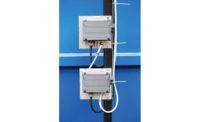It seems the same questions are asked every time a new addition of the National Fire Protection Association’s 70E Standard for Electrical Safety in the Workplace (NFPA 70E) comes out:
- What is NFPA 70E?
- Does OSHA require compliance with 70E?
- Is employee training part of it?
- Where can I obtain a copy?
NFPA 70E explained
NFPA 70E is designed to complement OSHA’s 1910 Subpart S electrical standards, expanding on OSHA’s performance-based requirements by providing the “how to” to comply with them.
The first NFPA 70E consensus standard was published in 1979. Since then, revised editions have broadened and improved the standard. The 70E 2018 edition had an effective date of August 21, 2017, and supersedes all earlier editions.
There is no single requirement for workers to be trained on the entire NFPA 70E standard. Instead, a recurring theme in the standard is that workers need to have specific training for the tasks they will perform. Purchase NFPA 70E® at www.nfpa.org.
OSHA compliance
While OSHA hasn’t incorporated the NFPA 70E by reference in 29 CFR 1910.6, the agency may look at an employer’s failure to follow it as proof of negligence.
Evidence of that is found in OSHA’s still-valid Letter of Interpretation (LOI) dated November 14, 2006, that discusses its views on NFPA 70E. Even though the letter is 12 years old and references an old edition of 70E, that LOI offers insights in how OSHA expects employers to use 70E.
The LOI states, “OSHA recommends that employers consult consensus standards such as NFPA 70E-2004 to identify safety measures that can be used to comply with or supplement the requirements of OSHA's standards for preventing or protecting against arc-flash hazards.”
OSHA addresses this question: “How is OSHA enforcing §1910.132 and Subpart S with regard to the latest edition of NFPA 70E requirements?”
OSHA answers, “OSHA has not conducted a rulemaking to adopt the requirements of the latest edition of NFPA 70E and, therefore, does not ‘enforce’ those requirements. However, industry consensus standards, such as NFPA 70E, can be used by OSHA and employers as guides in making hazard analyses and selecting control measures.”
Another question asks, “Does OSHA issue Section 5(a)(1) General Duty Clause violations to companies who do not follow the new NFPA 70E requirements?”
Reply: “A violation of the General Duty Clause, Section 5(a)(1) of the Act, exists if an employer has failed to furnish a workplace that is free from recognized hazards causing or likely to cause death or serious physical injury. The General Duty Clause is not used to enforce the provisions of consensus standards, although such standards are sometimes used as evidence of hazard recognition and the availability of feasible means of abatement.”
Finally, a footnote at the end says, “OSHA has not formally compared each provision of the NFPA 70E-2004 standard with the parallel provision in Subpart S but generally believes that the NFPA standard offers useful guidance for employers and employees attempting to control electrical hazards.”
The bottom line is that OSHA has not adopted 70E, but may use the standard as evidence when issuing a citation.






